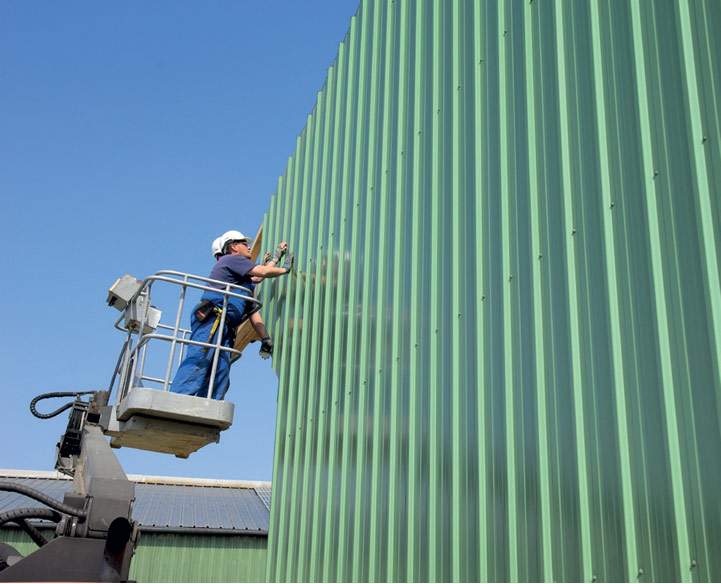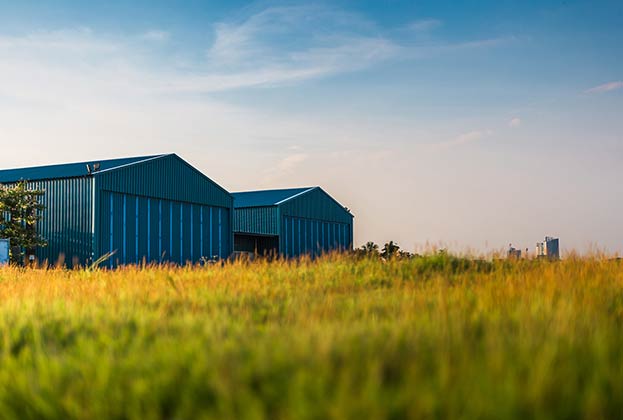The size and height of many agricultural buildings are ill-suited to modern needs
Some of the largest structures in rural areas are agricultural buildings, so how much potential is there for some of them to be repurposed for logistics uses?
Agricultural subsidies will be phased out across the UK, squeezing the finances of farm businesses and challenging the industry to improve its efficiency. In England, Defra has even acknowledged that its intention is to encourage structural change, which is likely to lead to there being fewer but larger farm businesses. In due course farmers in Scotland, Wales and Northern Ireland are likely to experience similar pressures. This could have consequences for the type and size of buildings needed for agricultural use.
Increasing farm size to benefit from economies of scale has long been a strategy and the average farm size in the UK has grown by 17% since 2005. However, these statistics do not reflect the fact that due to joint ventures and contract farming agreements agribusinesses are performing field operations over multiple holdings and as a result much larger areas than Defra’s data suggests. For example, arable joint ventures average 1,600 hectares but will each be comprised of a number of smaller member businesses.
Joining forces with a neighbour or entering into a contract farming agreement is a proven way to cut fixed costs and increase profitability. However, the ageing infrastructure found on many farms can be a barrier to improving productivity. Expanding farmers can find that they accumulate a portfolio of buildings that are no longer fit for purpose. A 2006 study by EFFP found that up to a third of on-farm grain storage in England was more than 30 years old. Fourteen years on, and with limited investment in farm buildings, a significant proportion of on-farm grain storage is now over 44 years old. We estimate that this could represent a floor area of over 25 million sq ft.
The size and particularly the height of many older farm buildings are ill-suited to larger modern farm machinery, while the capacity of fixed grain handling equipment such as dryers and conveyors cannot meet the demands placed on them by today’s largest combine harvesters. These steel portal frame buildings may still be structurally sound, but they have become operationally obsolete – a situation exacerbated by a taxation policy that encourages investment in higher output agricultural machinery more than farm buildings. During 2018-19 net investment in farm buildings was £548 million in England, whereas investment in machinery was 164% higher.
To increase efficiency, businesses could consider consolidating their storage capacity in a modern, efficient, centralised grain storage site or buying storage space within a cooperative central store. Both solutions would also allow the business to access more energy-efficient grain drying equipment. As the focus on achieving net zero increases, farms will come under pressure to ensure their grain is dried as efficiently as possible.
Another reason to invest in new or cooperative storage is to improve food safety. The argument that the UK’s high food safety standards need to be upheld underpins calls for farmers to benefit from a degree of protection from imports. However, there are food safety standards that arguably should be tightened to strengthen this case. The flexibility to store food crops in temporary stores until 31 October each year is one example. In a temporary store, grain is likely to be accessible to birds and rodents, and the risk of contamination by fungi, insects or mites is higher too as it cannot be cooled and ventilated to the standard possible in a fully assured store.

Are agricultural buildings fit for purpose?
Structures and buildings allowance
The incentives for investing in new agricultural buildings are currently the strongest they have been since April 2009. In the Autumn Budget of 2018, the Structures and Buildings Allowance was announced. This tax relief allows farmers to offset 2% of the construction, renovation, repair and conversion costs of farm buildings against their taxes each year for a period of 50 years. The 2020 Budget improved the relief, increasing the allowance to 3%, which cuts the 'payback period' to 33 and one-third years. It can be used in combination with the Annual Investment Allowance (currently £1 million) that covers plant and machinery, such as grain handling and drying equipment, and allows the full value of qualifying plant and machinery to be written off against profits in the year in which the expenditure is incurred.
The Structures and Buildings Allowance is not specific to agriculture, so it is available for the construction and conversion costs of commercial buildings too.
Read the articles within Spotlight: Rural Logistics below.
.jpg)
.jpg)

